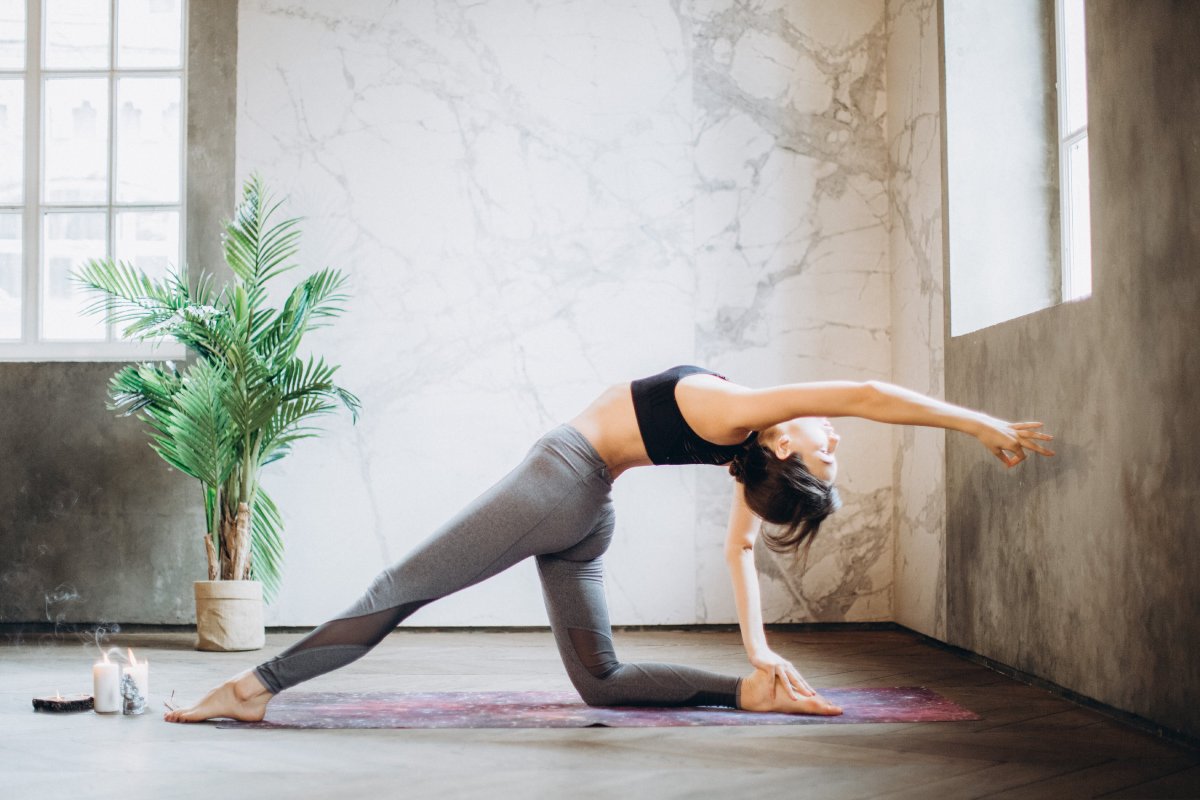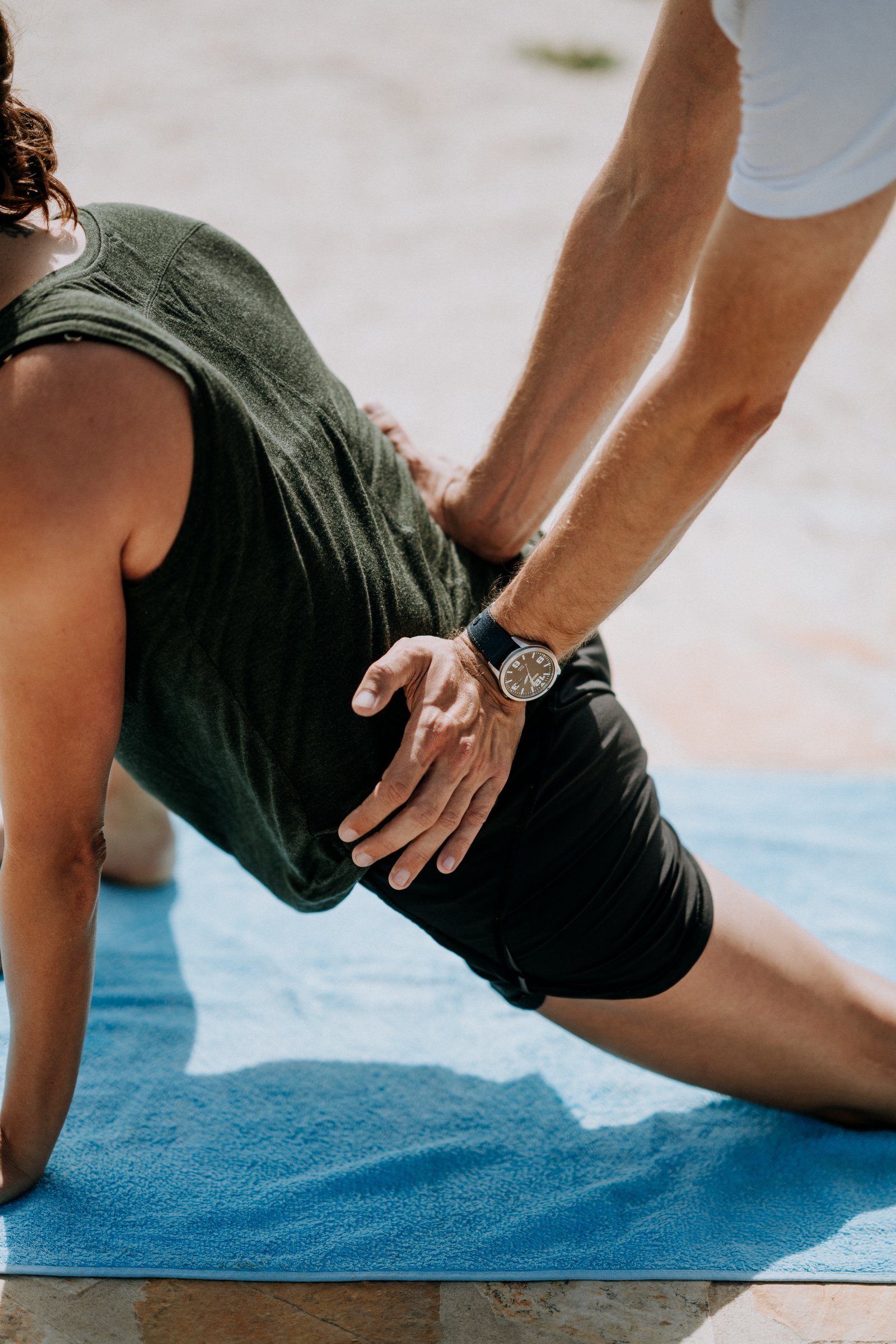Listen to this article:
Whether you’re just beginning your yoga practice or you’ve been attending classes for awhile, it can be difficult to gauge how often you should get on the mat.
Regularly engaging in this ancient practice offers profound benefits for your mental health and physical fitness. Depending on your goals, yoga could be a daily practice or a weekly ritual. The frequency of your yoga sessions should strike a balance between challenging your mind and body while also allowing ample time for rest.
Here we’ll explore how often to practice yoga, all the benefits of a consistent practice, and how to design a yoga routine that will match your spiritual and/or fitness goals.
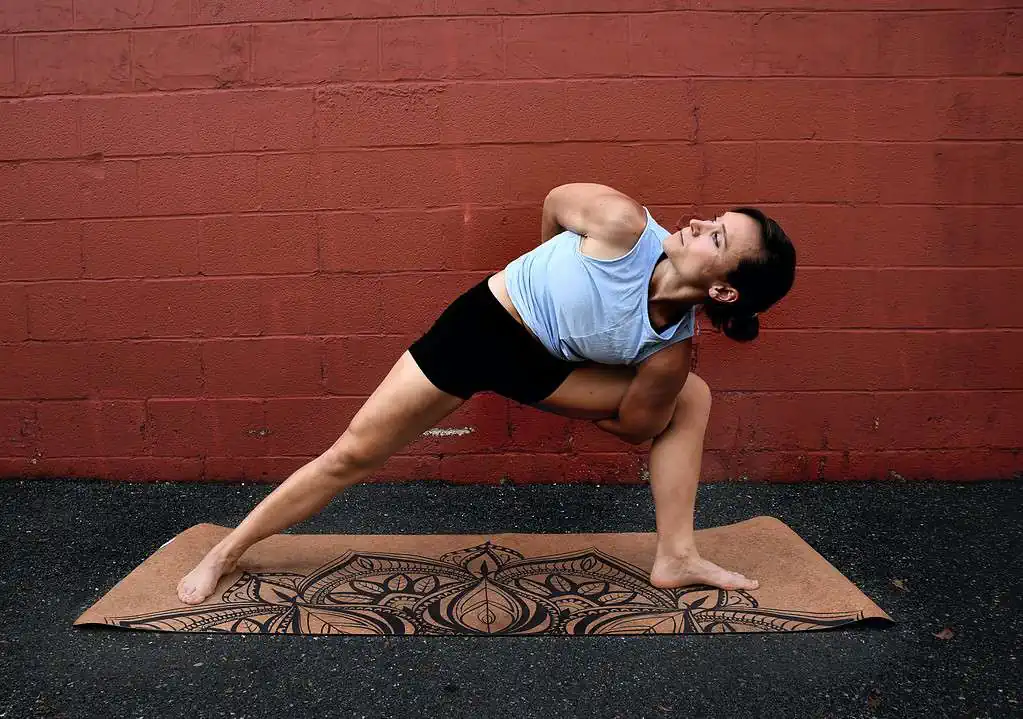
Contents
Quick Answer: How Often Should You Do Yoga?
There is no “silver bullet” to achieving your yoga goals. Whether you want to feel more relaxed, lose weight, get more flexible, or build toned yogi abs, the frequency of your yoga practice depends on so many factors.
Some people benefit from an hour long yoga class every day or every other day. Others prefer 15 minutes each evening. Others may opt for only one or two classes per week. If you practice regularly, yoga will bring benefits no matter what. Consistency is more important than intensity.
Here are our general recommendations based on different scenarios. Remember, every body and schedule is different, so it’s important to know your own boundaries.
- Yoga for Beginners: 2-4 beginner or slow flow yoga classes per week (60 minutes each)
- Yoga for Weight Loss: 4-5 Vinyasa or Power yoga classes per week (60-90 minutes each) coupled with proper nutrition and at least 1 rest day
- Yoga for Reduced Stress: Daily yoga sessions (15-20 minutes each) with meditation and deep breathing
- Yoga for Building Strength: Ashtanga or Bikram yoga 3-6 times per week (60-90 minute classes)
- Yoga for Improving Flexibility: 1-3 restorative yoga or Yin yoga classes per week
- Yoga for Chronic Pain: 1-3 gentle flow yoga classes per week (30-60 minutes each)
- Yoga for Gym Goers: 15-20 minutes of restorative yoga stretching after your weight lifting workout or 1-2 yoga classes on your rest day(s)
- Yoga for Improving Sleep: 10-15 minutes of relaxation every night before bed
- Yoga for General Overall Health: 2-5 Hatha classes per week (30-60 minutes each)
Yoga is unique from any other form of exercise: it is a secular spiritual experience that aims to connect the mind, body, and soul through intentional movement and breathing exercises.
Anyone can benefit from yoga regardless of their flexibility, body type, background, or fitness experience. The most important thing is to remain consistent and attentive to your body’s needs.
Designing a proper yoga routine is crucial for creating a regular practice that fits your unique goals.
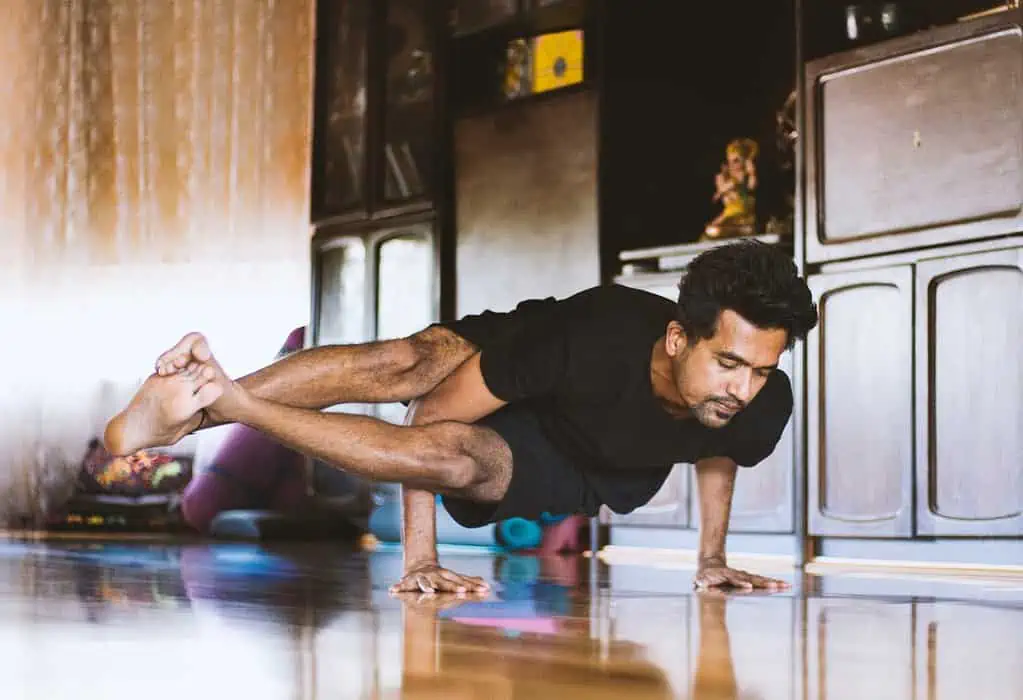
How to Design Your Yoga Routine
Practicing yoga to lose weight is clearly going to require a much different approach than doing yoga to decompress from a high-stress job.
How much yoga you do comes down to:
- Clarifying your goals
- Understanding the types of yoga available to you
- Deciding where to practice
- Choosing what time of day to do yoga
- Building a yoga habit
Define Your Goals
If you’re doing yoga to see results on a specific physical or mental goal, it helps to clarify this beforehand so that you can find the ideal classes, studio, location, and schedule for your practice.
The most common reasons people start yoga include:
- Lose weight and burn fat
- Reducing stress or having a calmer mind
- Helping with chronic pain (especially back pain)
- Physical therapy (recovering from an injury)
- Build muscle and tone
- Improve flexibility and balance
- Complement an existing workout routine
- Delve into a spiritual practice
A regular yoga practice can fulfill all of these goals when done with intention and the guidance of a professional yoga teacher (whether online or in-person).
But keep in mind that yoga is a long-run activity that doesn’t typically offer “instant” results. Generally, practicing every day of the week is going to help you reach your goal(s) more quickly than just hitting the studio once on the weekends.
In yoga as in life, it’s the journey, not the destination. As long as you choose the proper style and frequency of your practice, you will eventually meet your goals while also reaping an abundance of fringe benefits.
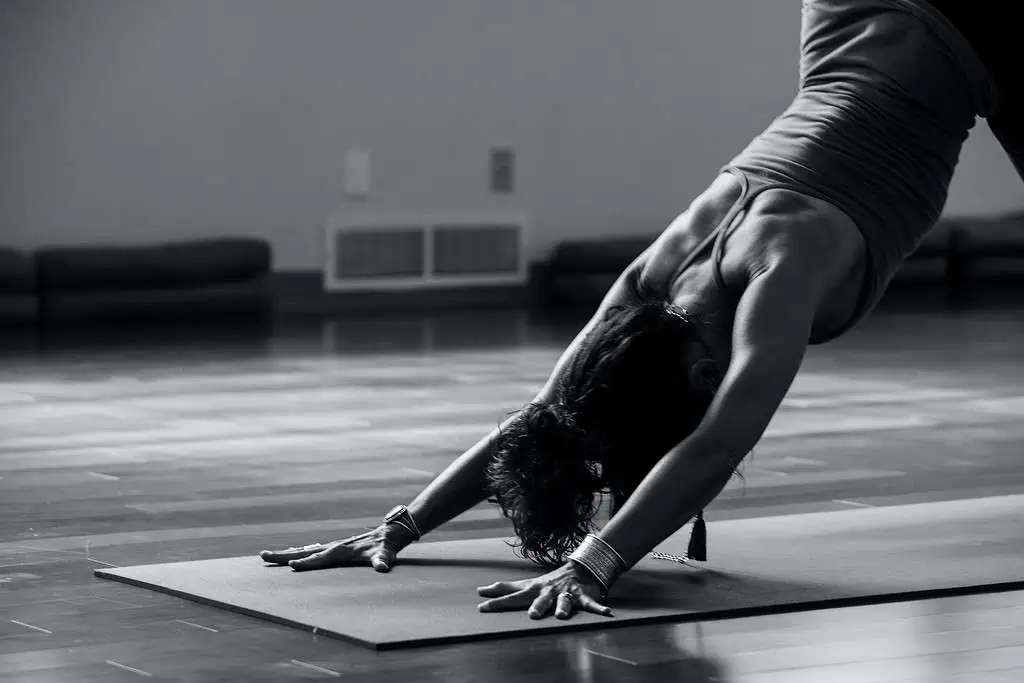
Decide What Type(s) of Yoga
Ancient yogic traditions include “eight limbs” of yoga, only one of them being the physical practice (asana) that we so often find in western yoga studios. Under the category of “asana”, there are dozens of different schools of yoga, from fast-flowing Vinyasa to ultra-hot Bikram to relaxing Yin yoga, and everywhere in between.
Understanding what type of yoga classes you are attending can help you gauge the best frequency for your routine. The primary styles of yoga include:
- Hatha Yoga: The most generic and common form of yoga in the U.S., Hatha yoga is the best option for beginners. You’re less likely to break a sweat, but you can burn a few extra calories and leave feeling looser and more relaxed.
- Vinyasa Yoga: A type of flow yoga that aims to sync the breath with continuous body movements that include fluid transitions between poses. No class is ever exactly the same, but you can expect lots of Sun Salutations and balancing practice. Vinyasa is great for weight loss, improving flexibility, and mental relaxation.
- Iyengar Yoga: This meticulous style of yoga is all about alignment, balance, and using an abundance of yoga props. This practice isn’t going to raise your heart rate much, but it is perfect for those doing yoga for physical therapy or relieving chronic pain.
- Bikram Yoga: One of the most intense styles of yoga, this set-sequence in an ultra hot, humid room is the quickest way to lose weight, build muscle, and tone your body. Bikram includes 26 poses that are the same every time and incorporate all the major muscle groups. Bikram requires a certified studio to practice in, however studios are very common due to its popularity. Bikram is no joke! Bring water and be ready for a challenge.
- Hot Yoga: If you want to sweat buckets and burn fat while building muscle tone, hot yoga classes are perfect for fitness-minded yogis. Similar to Bikram, hot yoga studios elevate the temperature and humidity while following a predictable sequence of poses (however, the sequence typically changes from the trademarked Bikram style).
- AshtangaYoga: Also called power yoga, Ashtanga is a rigorous sequence of postures that focuses on continuous motion (similar to Vinyasa). One of the best yoga workouts, this style is physically demanding and great for toning muscle, strength training, burning fat, improving flexibility, and getting your sweat on.
- Yin Yoga: This restorative form of yoga involves deep stretches held for long periods of time. Yin yoga is ideal for deep relaxation, flexibility, and improving sleep. It can have an immediate calming effect and is a great complement to gym workouts.
- Kundalini Yoga: For the more spiritually minded, kundalini yoga uses chanting, breath work, singing, and repetitive poses to activate shakti spiritual energy. You can practice kundalini yoga every day if you are seeking a more soulful mindfulness experience.
Where will you practice?
The location where you roll out your mat will dramatically impact how often you decide to practice. In this busy world, people are often overwhelmed by the amount of obligations they have on their plate. If you really want to enjoy the benefits of yoga, you have to find a way to prioritize it in your schedule.
Most of the time, this comes down to convenience and focus. Though you could technically hop into a Downward Dog anywhere, practicing in your office or at the gym may not fit the whole “vibe” you’re going for. Setting the mood for your yoga practice helps you create a more sacred special space that is just for you.
Whether you do this at home, in a studio, or on the go, practicing in the same place on a regular basis will help trigger your brain and body to get into the flow more effortlessly.
Yoga From Home
If you prefer to do yoga at home, there are an abundance of online courses and YouTube videos available to guide you through yoga workouts. You can even design an inspiring yoga room or blissful meditation space for a fraction of the cost of studio membership.
Having an intentional area for your practice will help you look forward to getting on the mat instead of avoiding it. On the other hand, trying to get into the flow in the middle of your office or living room may cause a bit more mental blocks.
Pros of Home Practice
- Perfect for a high-frequency daily practice
- Roll out your mat any time
- Get started for very cheap or free
- Utilize YouTube videos or online yoga courses
- Design a sacred space or yoga room with an ambiance you enjoy
- Your yoga mat is always available, ready to go
Cons of Home Practice
- Less accountability
- No yoga community connection
- More difficult to focus due to distractions
- No hands-on adjustments from teachers
- May be harder to relax
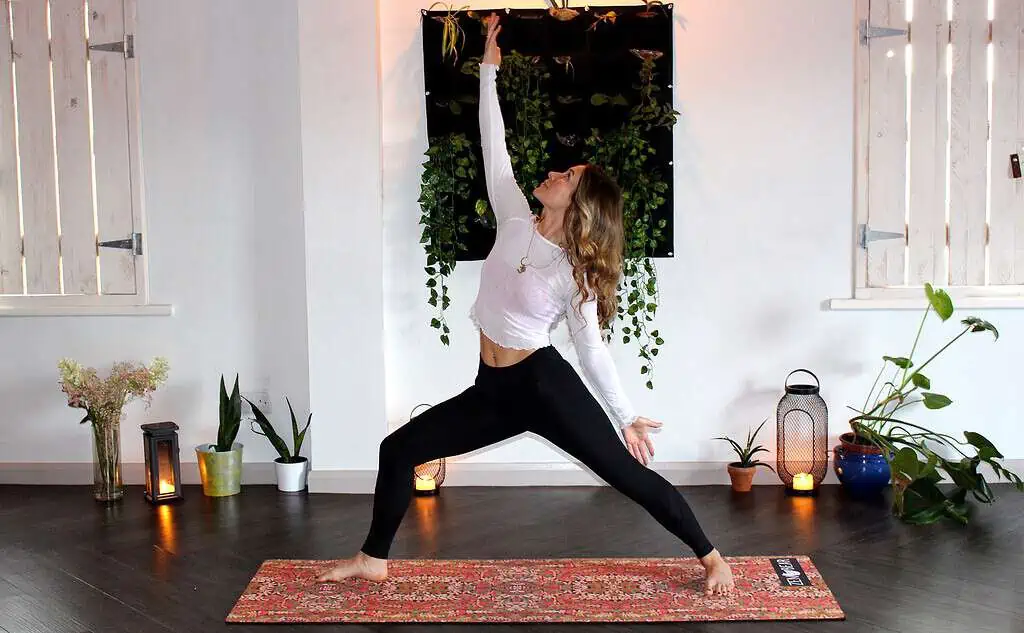
Yoga at a Studio
If you enjoy the studio experience, the amount of classes you are able to make per week will come down to how close the studio is to your home and whether or not you prioritize it in your daily schedule.
Studios are undeniably more expensive and require adding another stop to your commute. However, doing yoga at a studio can feel like a mini escape from your busy schedule, resulting in deeper relaxation and fewer distractions from your personal life. You also have the support and guidance of professional yoga teachers and a community of fellow yogis.
Pros of Studio Practice
- Escape your busy schedule
- Better for a few classes per week
- Special space set aside for you
- Sense of community
- Accountability from friends and other students
- Teacher guidance for your specific goals
- Hands-on adjustments
Cons of Studio Practice
- More expensive
- Commute to the studio
- May be harder to make it every day
Pro Tip: Starting off your yoga journey at a studio can be very beneficial for creating a yoga habit in your life. It is scientifically proven that people are more likely to meet their fitness goals when exercising with friends.
By paying a membership fee and meeting other yogis during the classes, you are building accountability as well as community.
Yoga On the Go
If you have the mental adaptability and courage to toss out your mat anywhere, you can practice yoga multiple times a day if you want to.
The benefits of deep breathing or light stretching for 15 minutes on your lunch break could offer profound clarity and lower stress levels. Similarly, being able to do a quick flow in the airport before boarding a plane can make your body feel so much better during travel.
Pros of On-the-Go Practice
- Allows the most frequent practice
- Build resilience and adaptability
- Practice outdoors with nature (yoga on the beach anyone?)
- Get used to practicing literally anywhere
- Get your zen on in public
- Feel relaxed and liberated at any time
- Use portable travel-size yoga mat
Cons of On-the-Go Practice
- Lots of distractions at gyms, parks, or public places
- More mental focus required
- Less privacy
- People may be watching you practice
- No guidance from teachers or friends
What time of day should you practice yoga?
Ancient yoga teachers have advised that the best times to practice yoga is typically early morning or in the evening before bed. However, modern philosophy gears more toward practicing yoga whenever it fits in your schedule.
For morning yogis, a light Vinyasa flow or gentle Hatha sequence is a great way to warm up before work. If you have the time, hitting the studio for an intense Bikram or hot yoga session can give you an energetic boost to begin your day.
On the flip side, it’s best to avoid super intense yoga workouts right before bed. Instead, opt for deep breathing, Yin Yoga, or simple Hatha poses to prepare for deeper sleep and relaxation.
If you want the maximum benefit of yoga in your workout routine, always practice restorative yoga after lifting weights or going to the gym. Research shows that static stretching before strength training can actually hinder your workouts, whereas dynamic movements like light vinyasa flows are better for pre-workout warmups.
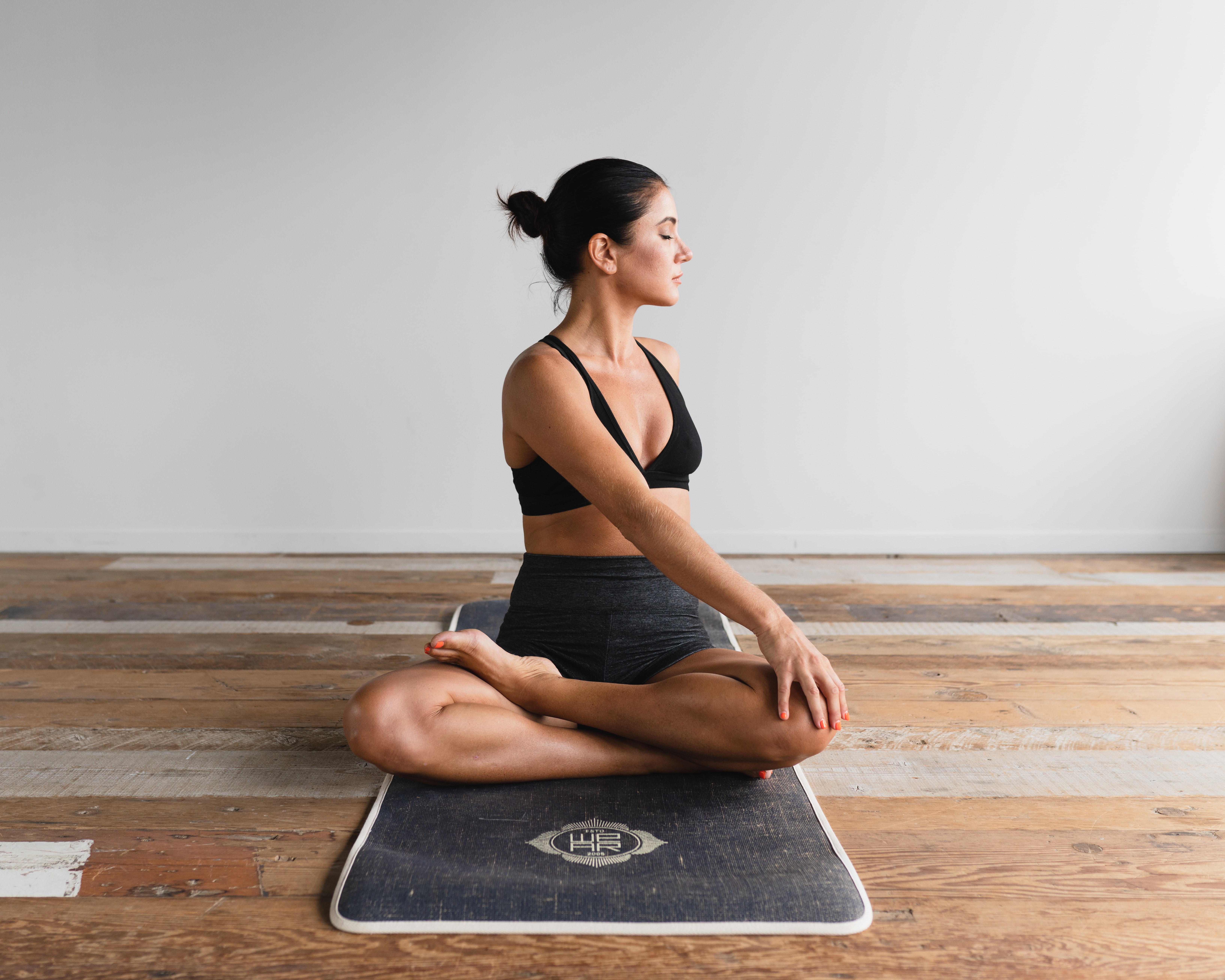
How to Build a Yoga Habit
Building a yoga habit is all about discipline and consistency in your daily life.
If you practice daily, it’s best to get on the mat at the same time every day to establish a set habit. This will trigger your mind and body to “get in the zone” at the same time every day.
If you practice a few times a week, try planning your yoga sessions on the same days or attending a yoga class at the same time every week. Again, this builds a habit that your body can expect (and hopefully look forward to) on a regular basis.

How Often Should You Do Yoga, Based on Your Goals
Once you establish a yoga routine, it may take a few months to start seeing results. You can reap so many benefits from a consistent practice as long as you remain dedicated to the process. Here are some general recommendations for the most common yoga goals.
Remember that the ideal frequency of your yoga practice depends on your age, weight, fitness level, and overall health. Consult a personal trainer or registered yoga teacher to help you design a customized yoga workout routine.
Weight Loss and Physique
There is no shame in being most interested in the physical benefits of yoga. After all, yoga can create some seriously toned bodies. A regular practice will build muscle, increase flexibility, improve balance, and potentially help with weight loss. Yoga is also the perfect complement to lifting weights, running, or using as a standalone workout.
Coupled with a calorie deficit, proper nutrition, and strategic workout planning, yoga can be extremely beneficial for losing weight. However, though yoga can torch some major calories, it may not be as effective for weight loss as lifting weights or cardio exercise.
The best styles and frequencies of yoga for weight loss are:
- Vinyasa flow 3-6 times per week
- Ashtanga (power yoga) 4-5 times per week (opt for more frequent 60-minute classes or just 2-3, 90-minute classes)
- Bikram (hot yoga) 3-5 times per week *don’t forget 1-2 rest days per week, as Bikram is very intense on the body
Physical Therapy or Increasing Flexibility
Anyone with major muscle soreness or mobility limitations can benefit from a yoga practice of as little as 10 minutes or up to an hour per day. In fact, some studies have shown that just 12 minutes of daily yoga can help slow or reverse osteoporosis bone loss.
When using yoga for physical therapy, it’s best to follow the instructions of a certified yoga teacher who can guide you through proper alignment and motion to avoid further injury.
Stress Relief
Ideally, stress relief practices should be part of our everyday routines in the hectic modern world. But that isn’t necessarily doable for everyone. Practicing yoga for 15 minutes on your lunch break or 30 minutes before bed can provide ample stress reduction results. If that isn’t possible for you, just two or three longer sessions (60 minutes) per week have been shown to significantly lower your stress levels.
FAQs
Is it OK to do yoga every day?
If you’re in good health, practicing yoga every day is completely safe and practical for most bodies. Even if it’s just 15-30 minutes, consistent daily yoga practice offers the most immediate and long-lasting mental and physical benefits.
As long as you’re not injured practicing yoga or suffering from a health condition, you can do yoga every single day. This can quickly and dramatically improve your flexibility, balance, metabolism, circulation, respiratory system, and even boost your immune system.
Is 15 minutes of yoga a day enough?
No matter how short the session is, getting on the mat for 15 minutes can benefit both your mind and body. However, if you are incorporating yoga to see results in your physique or fitness, you will probably need to set aside at least 30-60 minutes every other day to maximize your results.
How long should you do yoga daily?
Depending on what style of yoga you practice, it’s recommended to practice yoga for 30-90 minute sessions at a time. Harder yoga classes like Bikram offer a much more intense challenge than a gentle Hatha yoga class, so the amount of time will vary based on your fitness level and goals. Ultra-long and intense yoga sessions (over 90 minutes) may have diminishing returns for your flexibility, stamina, and balance.


